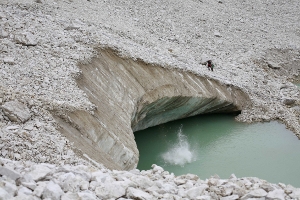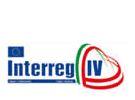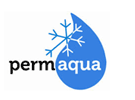Permaqua project
Permafrost and its impacts on water resources and water ecology in high mountain areas

The presence of permafrost in the Alps above 2500 m altitude is more frequent than often assumed. The permafrost areas in South Tyrol have an extension of about 440 km2 (6% of the total surface), and of about 2000 km2 in Austria. Because of its temperature near to 0° C, the permafrost is sensitive to temperature increase. Climatic models forecast for the Alps a warming of about 4° C between now and year 2100 and therefore a significant melting of permafrost and consequently an increase of the instability of the slopes and more frequent landslides and floods, as well as variations of the hydrological regime. The consequent repercussions on the ecology of the alpine high mountain environment will probably be high. The first results of the project Interreg IVB Alpine Space PermaNET shows that waters from melting permafrost can contain high concentrations of heavy metals. In some areas these concentrations are definitely above the limit of acceptance for drinking water. Although there is scientific evidence that these heavy metals are not of geological origin, their source has not yet been identified with certainty. The consequences on flora and fauna of mountain water bodies are also unclear.
In the frame of the permaqua project, analyses on surface waters will be made and compared with the already available information, in order for decision makers to react to the present modifications taking place in the permafrost environments. The partners of the project will analyze the chemical and biological quality of water bodies alimented by permafrost. A report will be produced on the state of surface water bodies influenced by permafrost in comparison with unaffected waters. Furthermore forecasts on the influence of surface processes, caused by permafrost variations on high mountain ecology and tourism will be made. The implementation of strategies will be considered in collaboration with alpine associations, national and natural parks authorities and holders of mountain shelters. The present permafrost monitoring system, anchored at international level, will be updated and further developed in order to assure the future recording of permafrost variations due to climatic changes.
This 3-year project is co-funded by the Program Interreg IV Italy-Austria, European Regional Development Fund.


